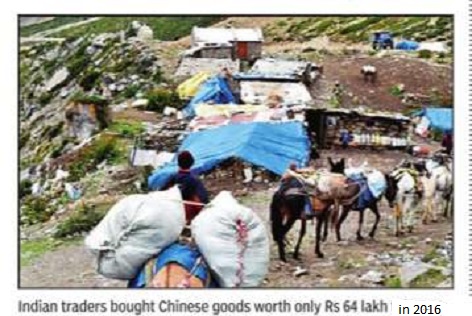China-India economic relations
(→Exports of China to India and India to China) |
(→Sharp dip in imports/ 2016) |
||
| Line 29: | Line 29: | ||
= Border trade= | = Border trade= | ||
==Sharp dip in imports/ 2016== | ==Sharp dip in imports/ 2016== | ||
| − | [[File: The border post of the Tibet- Indian border.jpg| The | + | [[File: The border post of the Tibet- Indian border.jpg| The trading post on the Tibet- Indian border/ 2016 |frame|500px]] |
| − | [http://epaperbeta.timesofindia.com/Article.aspx?eid=31808&articlexml=Sino-Indian-border-trade-sees-sharp-dip-in-02112016011027 Prem Punetha, Sino-Indian border trade sees sharp dip in imports this year, Nov 02 2016 : The Times of India | + | [http://epaperbeta.timesofindia.com/Article.aspx?eid=31808&articlexml=Sino-Indian-border-trade-sees-sharp-dip-in-02112016011027 Prem Punetha, Sino-Indian border trade sees sharp dip in imports this year, Nov 02 2016 : The Times of India] |
Revision as of 14:39, 2 November 2016
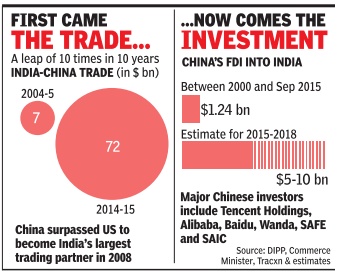
This is a collection of articles archived for the excellence of their content. |
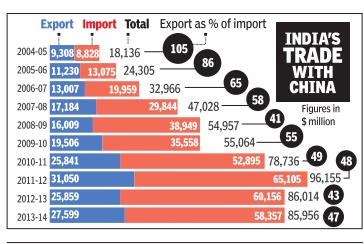

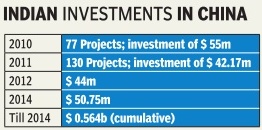
Contents |
Exports from China to India and India to China
2015: India has a $3,540.5m deficit every month
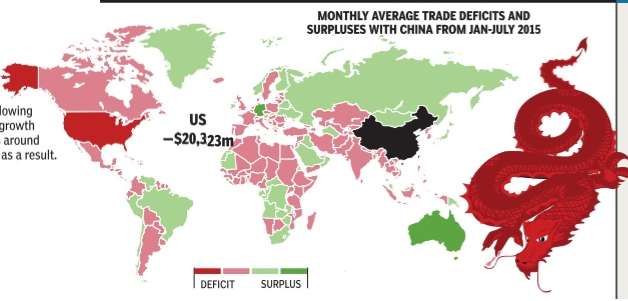
The Times of India, September 27, 2015
China's economy is slowing from its double digit growth and many economies around the world are reeling as a result.Its trade partners, including India, have seen once dependable surpluses wither away, or already existing deficits compound.India counts a $3,540.5m trade deficit on average a month, according to data clocked between January and July 2015
2016: China no.1 source of India's imports, no.4 destination for exports
Calls for boycotting Chinese goods don't sound practical in the present trade scenario. China is the largest source of India's imports while it is the fourth largest destination of our exports. Trade with India is a much smaller fraction of China's total trade volumes
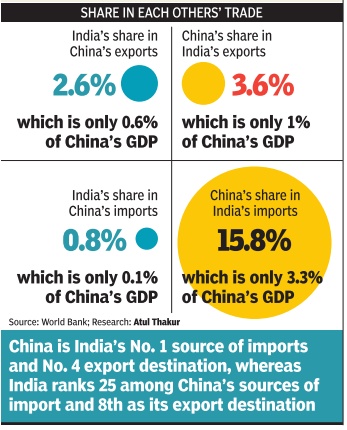
i) The imports of China and India from each other as a percentage of the other country’s GDP
The Times of India
Border trade
Sharp dip in imports/ 2016
Pithoragarh:
The cross-border trade at Taklakot mandi in Purang district of China's Tibet Autonomous Region where traders from Uttarakhand have traditionally been selling their wares has seen a sharp rise in Indian exports (Rs 5.86 crore) this year, while the Chinese goods they bring back after their five-month stay saw a slump as they amounted to just Rs 64 lakh.
This year saw a wide gap between exports and imports.In 2015, the trade volume with China through Lipulekh Pass was Rs 4.36 crore, of which Indian traders exported goods worth Rs 1.6 crore while imports from China were worth Rs 2.76 crore. In 2014, imports from the local Bhutia traders were worth Rs 2.14 crore, while they sold goods worth just Rs 1.9 crore.
Indian exports from the district include carpets, bamboo, matchboxes and packed sweets, while the traders bring back readymade garments, jackets and raw wool.“A total of 195 trade passes were issued this year, of which 77 were for traders and 118 were for helpers, but no Chinese traders came to the Indian mandi in Gunji,“ said P S Kutiyal, assistant trade officer.The final figures for this ye ar's trade can be calculated only after all the traders reach the Gunji mandi and pay their customs duty , he said.
The cross-border business takes place between June and October each year when traders make the journey across the 17,000-foot-high Lipulekh Pass to Purang. The trade time was extended by a month after traders petitioned to the government, saying early closure will lead to financial losses. “The trade for this year closed on October 31 as all the traders and helpers have come back from the Chinese mandi in Taklakot,“ said Kutiyal. The temporary branch of the SBI in Gunji has no facility of currency exchange.
“Absence of this facility makes the exchange rates costlier as traders have to pay Rs 11 for one Yuan, while the current rate is Rs 9.89 for a Yuan,“ said a trader. “We had submitted a memorandum to the central government and local trade officer to set up a currency exchange centre in SBI Gunji, but nothing has been done in this regard,“ said Garvuyal. Also the Chinese authorities do not allow transport animals like mules or horses after the Lipulekh Pass, which makes the products costly , as traders have to hire Chinese vehicles to carry their goods.
